BENIGN AND MALIGNANT LIPOGENIC TUMORS
KEY POINTS
- In a lipoma, tissue confluent component other than mature fat raises the risk of sarcoma.
- Malignant tumors of fat and other mesenchymal origin often do not distinguish themselves from other malignancies based on appearance alone.
LIPOMAS AND THEIR BENIGN VARIANTS
Clinical Perspective and Pathology
Lipomas are benign, encapsulated submucosal and subcutaneous fatty tumors that pose no threat to the patient. The diagnosis is often clinically obvious in the more superficial lesions, and imaging is only necessary to clarify clinical situations in which the diagnosis is not entirely certain; thus, the patient can be reassured (Figs. 36.1A–D and 36.2) or treated if the lesion is causing symptoms1(Fig. 36.1E,F). This comes up mainly with deep neck masses that cannot be adequately palpated to determine their consistency. Imaging may also be used to evaluate the deep extent of larger lipomas prior to resection2(Fig. 36.3).
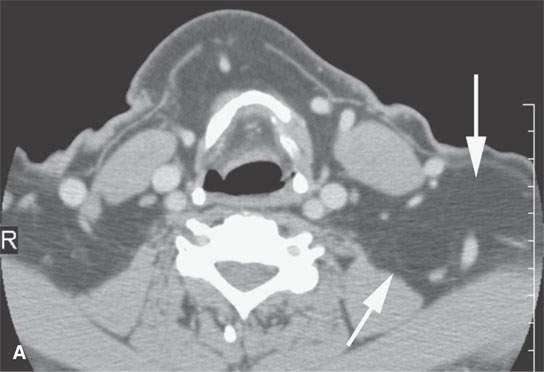
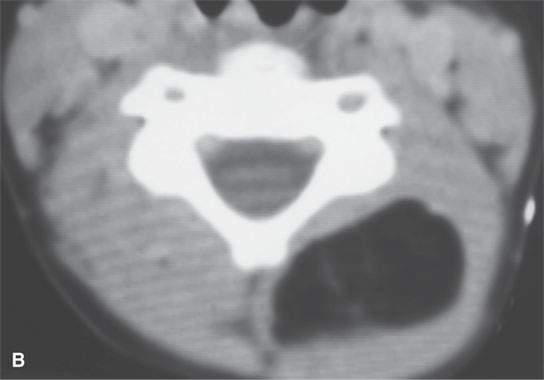
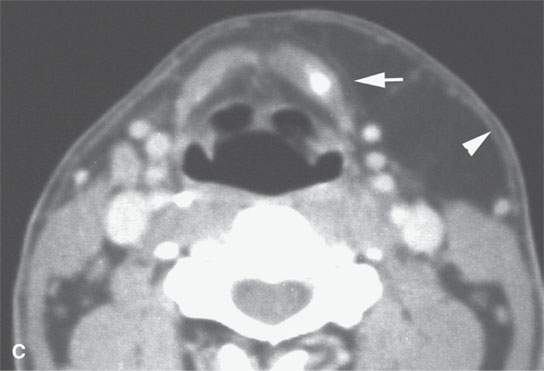
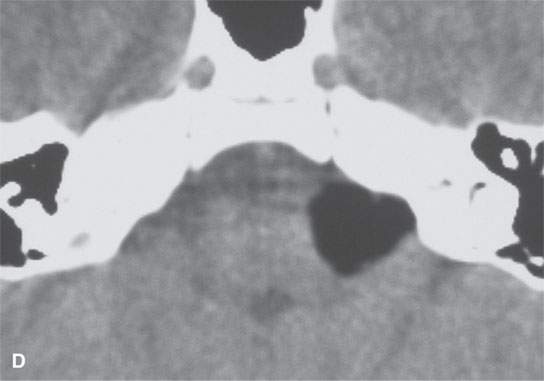
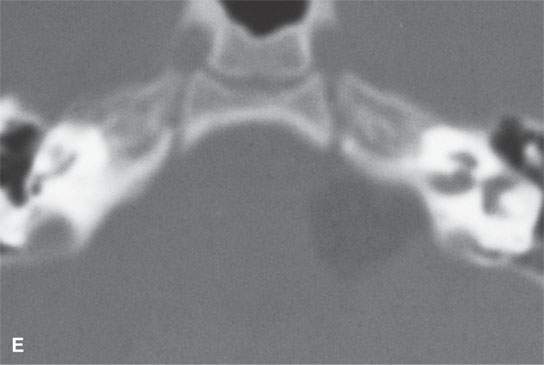
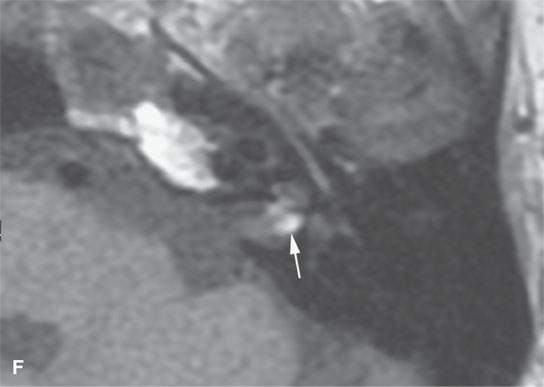
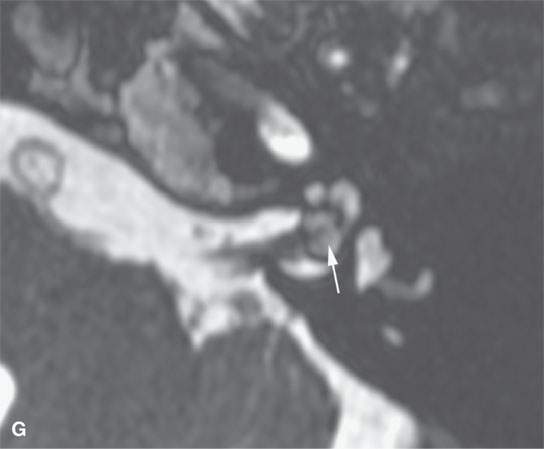
FIGURE 36.1. This a group of computed tomography studies on patients with various types of lipomas composed entirely of mature fat. A: Contrast-enhanced computed tomography (CECT) of a patient presenting with a supraclavicular neck mass. The relatively poorly encapsulated lipoma in the low neck and supraclavicular fossa is best recognized by its displacement of intervening vascular structures (arrows). B: A patient presenting with a posterior neck mass. This CECT shows an intramuscular lipoma composed entirely of mature fat. C: A patient presenting with an anterior lateral neck mass on the left side. This lipoma is composed completely of mature fat showing perhaps a very thin capsule medially (arrow), its capsule laterally inseparable from the superficial facia (arrowheads). D, E: Computed tomography study showing mature lipoma of the cerebellopontine angle. F, G: T1-weighted non–contrast-enhanced magnetic resonance and steady state images respectively showing a proven internal auditory canal lipoma (arrows).
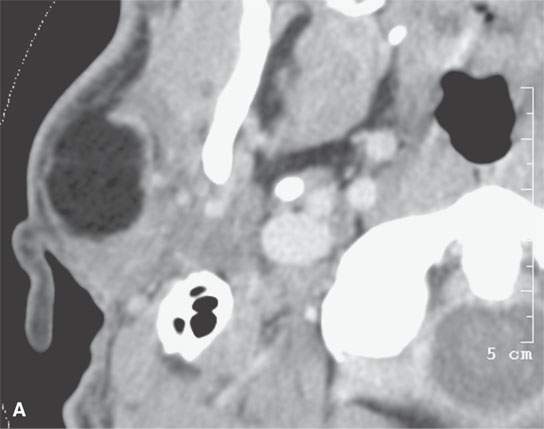
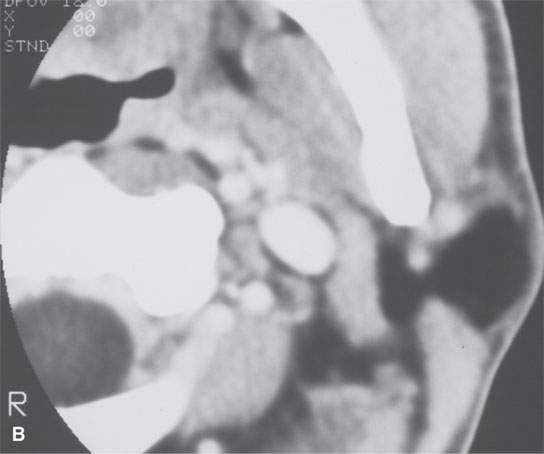
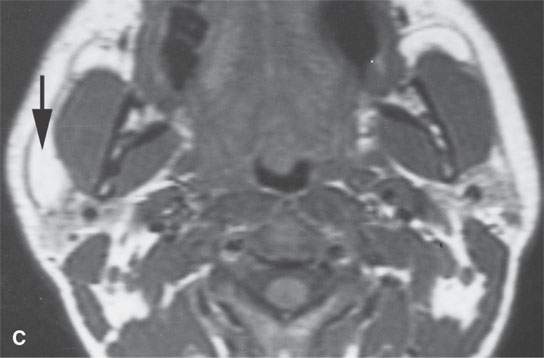
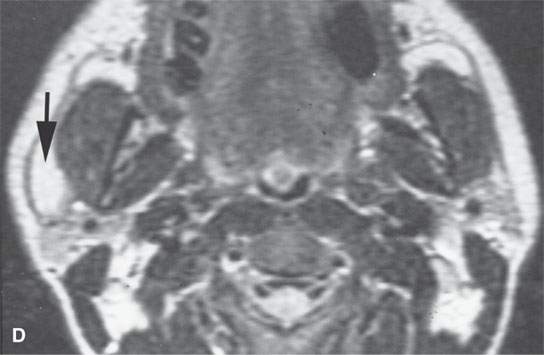
FIGURE 36.2. Various lipomas presenting as parotid masses. A: Contrast-enhanced computed tomography scan of a lipoma within the substance of the parotid gland composed of mature fat. B: Patient presenting with an upper neck mass actually due to a lipoma of the parotid tail. C, D: T1- and T2-weighted images, respectively, of a lipoma presenting as parotid mass (arrows). The signal intensity on the T1-weighted image in (C) and the T2-weighted image in (D) match the signal intensity of fat. This lipoma was considered to be within the substance of the parotid gland. It would lie along the expected position of both the buccal division of the facial nerve and parotid duct.
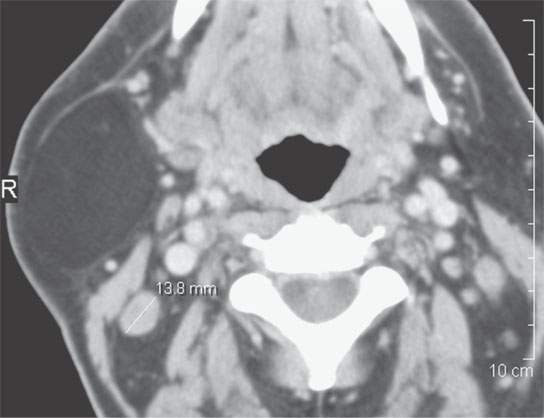
FIGURE 36.3. Lipomas frequently mimic submandibular gland masses. This contrast-enhanced computed tomography image shows a large lipoma that is thinly encapsulated, mimicking a submandibular gland mass.
Lipomas are common in the cheeks, especially in the buccal space, parotid region (Figs. 36.2 and 36.4), submandibular (Fig. 36.5) spaces, and neck3(Figs. 36.1 and 36.2). Deeper lesions may involve the parapharyngeal, retropharyngeal, and pre- and paravertebral spaces. Pedunculated lesions may involve the oral cavity, hypopharynx, and, rarely, the larynx. Any subcutaneous site in the head and neck can be the point of origin.
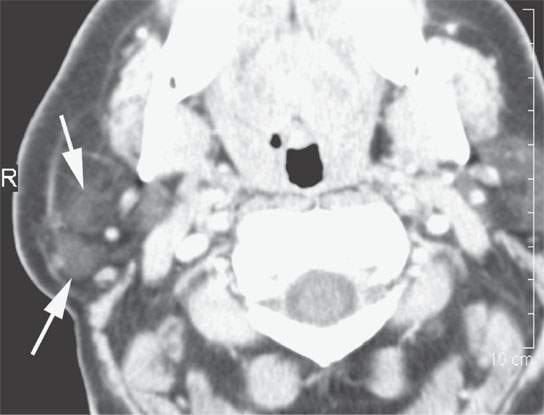
FIGURE 36.4. Occasionally, benign lipomas will have elements other than mature fat. This contrast-enhanced computed tomography shows likely fibrous zones within a lipoma otherwise composed of mature fat (arrows).
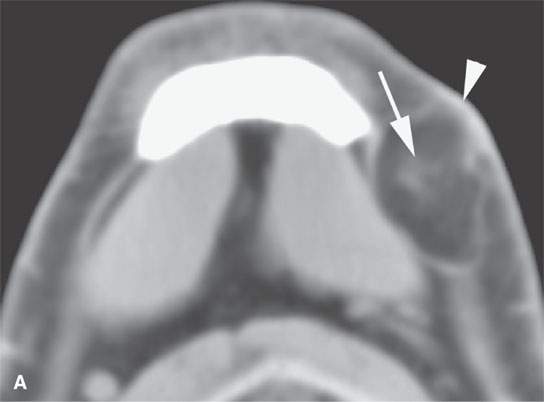
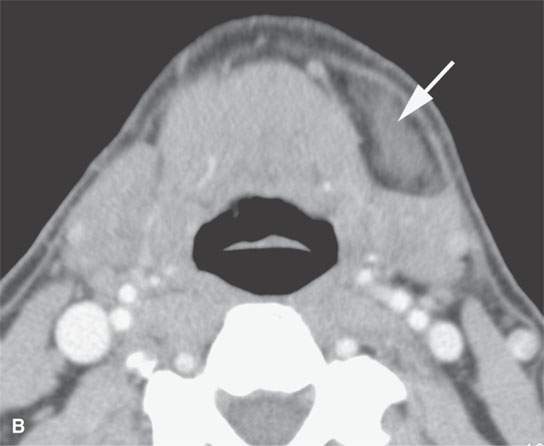
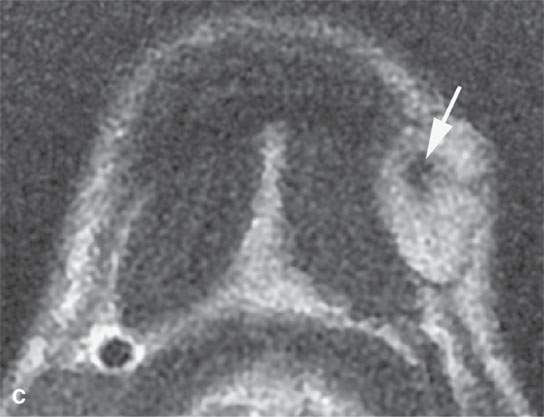
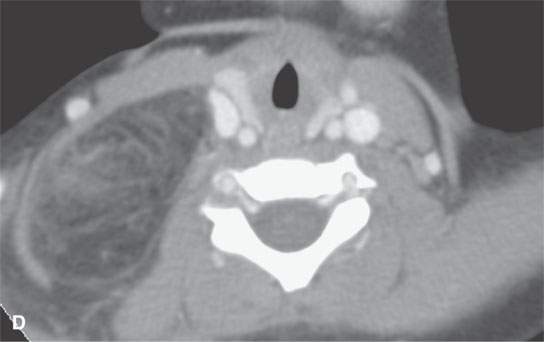
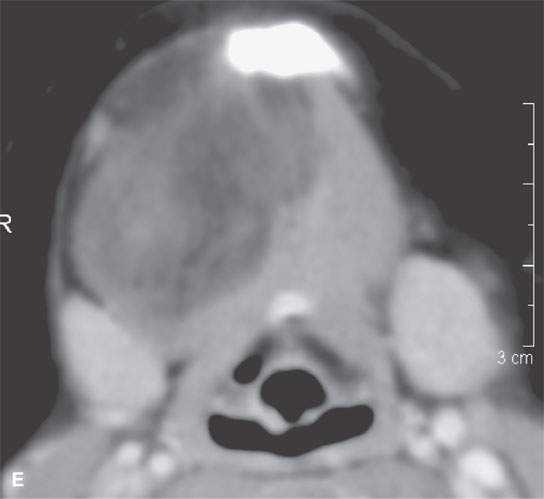
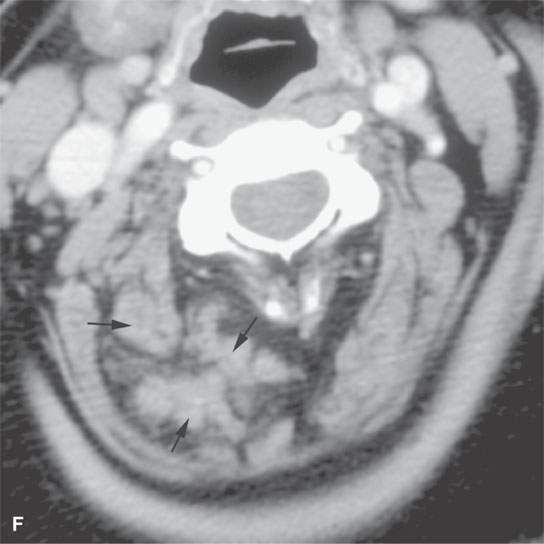
FIGURE 36.5. Computed tomography (CT) and magnetic resonance (MR) study of a patient with an atypical lipoma. A: Contrast-enhanced computed tomography (CECT) showing an encapsulated lipoma with a likely fibrous internal component (arrow) and overlying skin thickening (arrowhead)—both are unusual features of a lipoma. This was removed because it was painful and for cosmetic reasons. It was a benign lipoma. B: More inferiorally, the fibrous component of the lipoma was more apparent (arrow). C: T2-weighted MR study for comparison to (A) showed the low signal intensity fibrous component (arrow) correlating with that identified in (A). D: CT of a lipoblastoma of the posterior triangle. E: CT of a lipoblastoma of the submandibular space with an internal morphology somewhat different from the one in (D). F: CECT of a low-grade liposarcoma of the paravertebral region with solid elements (arrows) admixed with fibrofatty tissue.
Stay updated, free articles. Join our Telegram channel

Full access? Get Clinical Tree








